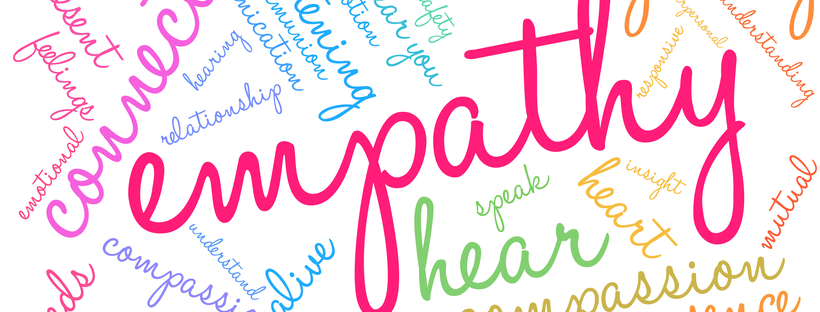
The Dos and Don’ts of Interacting Online
January 30, 2021
Don’t Let Drugs Hijack Your Teen’s Passions
February 1, 2021
Empathy is at the heart of what it means to be human—it’s a foundation for acting ethically, for good relationships, for loving well, and for professional success. Here are seven ways to model and develop empathy in our kids.
 Golden rule
Golden rule
Treat others the way you want your child to treat others
A recent study showed that when parents talk to their kids about other people’s feelings, the kids had better perspective-taking abilities (the ability to see a situation from another person’s point of view). This is the basis of many emotional skills, especially empathy. Just by talking about another person’s feelings, kids begin to develop those crucial brain connections that help them develop empathy.
 Don’t fuel the fire
Don’t fuel the fire
Stay calm in an emotional storm
When your child gets upset, do you get angry or set off by their big emotions? It’s human nature that our kids’ emotions are the exact triggers that fuel our own emotions and feelings. Our reactions influence their emotional development, so try to remain firm, but calm in the emotional storm. Through modeling self-regulation, over time our kids will learn how to self-regulate as well.
 Let it out
Let it out
Parents have feelings, too
As parents, we may feel our primary job is to protect our children from the big, often overwhelming emotions of adults. We try not to break down crying or become red-faced with anger in front of our kids, but they usually pick up on the fact that we’re upset, even if we try to hide it. Become an “emotion coach” by showing your emotions so that kids realize parents have feelings, too. On some level, it’s nice that our kids think we’re superheroes, but it’s also crucial they understand that we’re still human.
 Watch and learn
Watch and learn
The world doesn’t revolve around them
The best way for children to learn empathy is by being empathetic ourselves. They’ll notice when we do kind things like open doors for people and if we treat a restaurant server rudely. Parents need to remind children that it’s sometimes necessary for them to put concern for others above their own happiness—by insisting that devices be put away to help around the house or by requiring polite behavior even when they are in a bad mood.
 Gather ‘round
Gather ‘round
Make the most of family meetings
During times when there are family challenges or conflict, a family meeting will give children a voice and encourage them to see and understand the perspective of other family members. Listen carefully to your children’s views and ask them to listen carefully to the views of others. With practice and guidance, empathy will become a natural reflex and, through trial and error, will help children get better at tuning into others’ feelings and perspectives.
 Widen the circle
Widen the circle
Guide children to care for others
For most of us, it’s easy to have empathy for our family members and close friends. The real issue is whether children (and adults) have empathy outside that circle. As parents, it’s important that we guide children in understanding and caring for many kinds of people who are different from them and who may be facing challenges very different from their own. Help children learn to zoom in, tuning in carefully to others, but also to zoom out, taking in multiple perspectives and people.
 Notice the nice
Notice the nice
Pause and reflect on kind gestures
Good things happen around us all the time: a child offers to share a toy during a play date; a sibling gets a tissue for a crying little sister; a kind person picks up something you dropped and runs to catch you. When these small moments happen, reflect on them with your child by saying, “That person was so kind to do what they did.” If your child is the recipient of the kindness, ask how it made them feel. The more in tune your child is with their feelings, the more empathetic they’ll be to others.
By // Jenny Blunier
Sources: mcc.gse.harvard.edu, mother.ly, parentmap.com
MASK the Parenting Magazine a quarterly publication providing solutions for Today’s Families.
The parenting manual offering solutions to the modern-day challenges families face. From Pre-K
through College stay up to date on the modern day issues families face.
Are you up to date on the issues your child is facing?
MASK Mothers Awareness on School-age Kids offers parenting solutions for today’s families. MASK tackles important topics – from drugs and alcohol to bullying and Internet safety -and gives students, parents and the community the knowledge and tools to manage these potential challenges.
Subscribe today! https://www.tools4teaching.com/product/mask-the-magazine/
Download and share the MASKmatters app now! Made for children, parents, teachers and in Spanish.
Have solutions at your fingertips
Available free on apple and google play links below
Apple https://apps.apple.com/us/app/maskmatters/id1482305692
Google Play
https://play.google.com/store/apps/details?id=com.maskmatters.maskmattersapp&hl=en_US&gl=US




